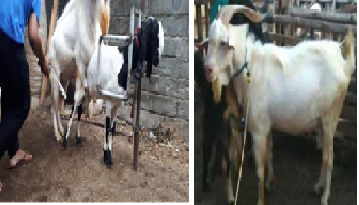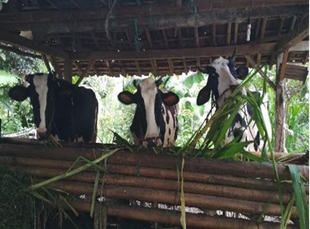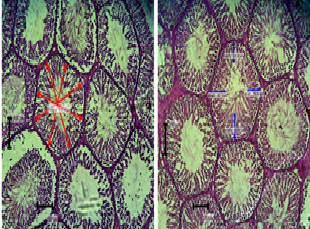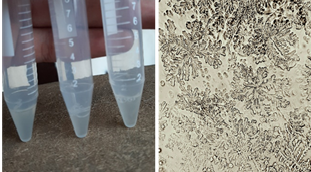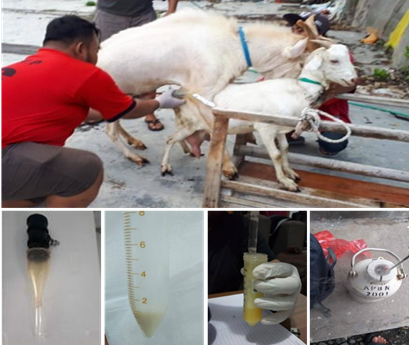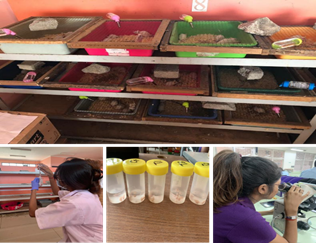PENGARUH JARAK DAN LAMA WAKTU PROSES PENGHITUNGAN STRAW SEBELUM DISTRIBUSI TERHADAP KUALITAS SEMEN BEKU SAPI SIMENTAL POST THAWING
Downloads
Affandhy, L., D. Pamungkas, B.Wijono, P.W. Prihandini, P. Situmorang, dan W.C. Pratiwi. 2006. Peningkatan Produktivitas Sapi Potong Melalui Efisiensi Reproduksi. Laporan Akhir. Loka Penelitian Sapi Potong. Afiati, F., E.M. Kaiin, M. Gunawan, S. Said, dan B. Tappa. 2004. Kualitas dan kemampuan hidup sperma beku
sapi PO setelah thawing. J. Protein. 11(2): 205"212. Celeghini, E.C., R.P. de Arruda, A.F. de Andrade, J. Nascimento, C.F. Raphael, and P.H. Rodrigues. 2008. Effects that bovine sperm cryopreservation using two different extenders has on sperm membranes and chromatin. Animal reproduction science. 104(2– 4) : 119–31. Cerolini, S., A. Maldjian., F. Pizzi., and T.M. Gliozzi. 2001. Changes in sperm quality and lipid composition during cryopreservation of Boar semen. Reproduction. 121: 395-401. Colenbrander, B., A. R. Fazeli, A. Van Buiten, J. Parlevliet and B. M. Gadella. 1992. Assesment of sperm cell membran integrity in the horse. Act. Vet. Scand. Supl. 88: 49-58. DziekoÅ„ska, A., L. Fraser, and J. Strzeżek. 2009. Effect of different storage temperatures on themetabolic activity of sperm following liquid storage of Boar semen. J Anim Feed Sci. 18: 638-649. Foote, R.H. and M.T. Kaproth. 2002. Large Batch Freezing of Bull Semen: Effect of Time of Freezing and Fructose on Fertility. J. Dairy Sci. 85: 453 – 456. Garner, D. L. and E. S. E Hafez. 2000. Spermatozoa and seminal plasma. In : Hafez, E. S. E. and Hafez, B (Edt.). Reproduction in farm animals. 7th Ed. Lippincoot Williams and Wilkins, Baltimore, Marryland, USA. Gillan, L., W.M.C. Maxwell, and G.Evans. 2004. Preservation and evaluation of semen for artificial insemination. Reproduction Fertil Dev. 16: 447-454. Gustafsson H.,and U.Emanuelsson. 2002. Characterisation of the repeat breeding syndrome in Swedish dairy cattle. J Acta Vet Scand. 43: 115-125. Hidayati. 2002. Tingkat Keberhasilan Pelaksanaan Inseminasi Buatan pada Ternak Sapi di kecamatan Kayu Aro Kabupaten Kerinci. Skripsi. Fakultas Peternakan Universitas Andalas. Padang. Ita, M. E. 2015. Kasus Kawin Berulang dan Faktor Penyebabnya Pada Sapi Potong di Wilayah Kerja Petugas Teknis Kesehatan Hewan Kecamatan Kedamean Kabupaten Gresik Periode 2014. Fakultas Kedokteran Hewan Universitas Airlangga. Surabaya. Lim, J.J., T.E Shin, S.H.Song, C.W. Bak, T.K.Yoon, and D.R. Lee. 2010. Effect of liquid nitrogen vapor storage on the motility, viability, morphology, deoxyribonucleic acid integrity, and mitochondrial potential of frozen-thawed human spermatozoa. Fertil Steril. 94:2736–41. Park J.E., and J.K. Graham. 1992. Effects of cryopreservation procedures on sperm membranes. J. Theriogenology. 38: 209-222. Riady, M. 2006. Implementasi Program Menuju Swasembada Daging 2010. Strategi dan Kendala. Seminar Nasional Teknologi Peternakan dan Veteriner. Puslitbangnak. Bogor. Rustamadji B., Ahmadi, Kustono, dan T. Sutarno. 2007. Kinerja usaha peternakan sapi perah rakyat sebagai tulang punggung pembangunan persusuan nasional Paper Disampaikan pada Lokakarya Persusuan Nasional. Yogyakarta. Dies 38 Fapet UGM.
Selk, G. 2002. Artificial insemination for beef cattle. http://www.osuextra.com Susilowati. S. Hardijanto. T. W. Suprayogi. T. Sardjito. dan T. Hernawati. 2010. Penuntun praktikum inseminasi buatan. Fakultas Kedokteran Hewan. Universitas Airlangga. Surabaya. Watson, P.F. 2000. The Causes of Reduced Fertility with Cryopreserved Semen. Animal Reproduction Science. 60: 481–92. Yulnawati., dan S.M.Agus. 2005. Motilitas dan keutuhan membran plasma spermatozoa epididimis kucing selama penyimpanan pada suhu 4°C. Media Kedokteran Hewan 21(3): 100 –104. Yusuf M., T. Nakao, B.M.K. Ranasinghe, G. Gautam, S.T. Long, Yoshida, K. Koike, and A. Hayashi. 2010. Reproductive performance of repeat breeders in dairy herds. Theriogenology. 73: 1220–1229.
Ovozoa by Unair is licensed under a Creative Commons Attribution-ShareAlike 4.0 International License.
1. The journal allows the author to hold the copyright of the article without restrictions.
2. The journal allows the author(s) to retain publishing rights without restrictions
3. The legal formal aspect of journal publication accessibility refers to Creative Commons Attribution Share-Alike (CC BY-SA).
4. The Creative Commons Attribution Share-Alike (CC BY-SA) license allows re-distribution and re-use of a licensed work on the conditions that the creator is appropriately credited and that any derivative work is made available under "the same, similar or a compatible license”. Other than the conditions mentioned above, the editorial board is not responsible for copyright violation.





























